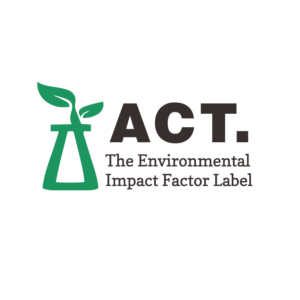LED illumination systems in the modern sustainable laboratory
Meet the Experts

Anna Lewis, Sustainable Labs Officer, University of Bristol
Email: [email protected]
Tel: +44 (0)1173 317110
Laboratories can consume up to 40% of the energy used on research-intensive university campuses, but it turns out there are many ways we can all reduce our carbon footprint at work. In the case of illumination systems for fluorescence microscopy, modern LED Illumination Systems consume less energy than mercury and metal halide bulbs, avoid toxic mercury and also cut down on waste by having a significantly longer lifetime.
Sustainable Labs Officer at the University of Bristol, Anna Lewis, explains how scientists can become more sustainable by considering whole life costs. She tells us how in some cases, ‘Green Grants’ are even available to support the switch to energy efficient equipment.
Tell us about your role
I’ve been in the role for getting onto four years now and I’ve been involved in chemical waste and lab equipment, and now I’m more involved in energy efficiency. Before this, I worked as a research technician in our biomedical sciences department for three years. I decided that I wanted to be involved in environmental science and so I completed an MSc at the University of Bristol in climate change science and policy, before successfully applying for my current role.
Are scientists becoming more aware of sustainability in the lab?
In the past, the issue of carbon emission was not a top priority, but lots has of course changed recently and I’ve witnessed a huge difference in the last four years I’ve been here. There’s been a huge increase in engagement, especially with academics. In sustainability you have the keen 15% who are actively engaged, then the 15% who are on the other end of the spectrum. Most people are in the middle, they want to help but they haven’t got the finances, resources or time. I focus on getting that group on-board. For academics, we help them understand how replacing equipment with new systems can facilitate their research, and our equipment replacement initiative has really got people on side.
There are other incentives for researchers to become more efficient, for example there is a reputational element, and our biomedical sciences building which now has green lab accreditation (it’s the biggest in the UK!) is a selling point for students. It’s now leading the way for other schools to follow suit.
Interest is definitely growing year on year, and I think that scientists are now more likely to go out of their way to adopt more sustainable research practices without expecting anything in return. Alongside this we have students, who are increasingly likely to care about the environmental aspects. Globally there’s been a huge shift in plastic use and since the declaration of the climate emergency by the University, senior management are now far more interested.

The University of Bristol’s biomedical sciences building is the largest UK building with green lab accreditation.
How are you helping scientists become sustainable?
Our ambition is to provide grants for cleaner, efficient equipment, based on whole life costs as a way of accurate comparisons. In the case of modern, efficient LED illumination systems, savings compared to traditional mercury and metal halide bulbs (detailed here) include:
- Energy (90% cost saving based on 0.114 kW/h versus 0.010 kWh/h)
- Waste disposal (disposing of mercury is expensive and bulbs must be replaced much more frequently than LED illumination systems)
- Maintenance (no need to waste time aligning LED illumination systems)
However, how we currently work is based on various schools, departments and grant holders having their own budgets – and the many savings impact different budgets. For example, academics don’t benefit from energy savings since they don’t pay the energy bills. The Sustainability team or University does, so we identify these situations and offer alternatives through an incentive we call a Green Grant. Different institutions call it by different names, but essentially we provide around five years of savings upfront to put towards the equipment, allowing a higher upfront cost, providing it pays for itself in a given time.
As a long-term scheme, some universities (including Bristol) have started to look at sustainability in procurement, calculating whole life costs and integrating this into our purchasing and tenders by considering savings across budgets. Improving the financial model of universities will really help us think in these terms and highlight the benefits of switching to more efficient systems. It will be great to see where we are in five years. Hopefully, we will have lovely whole life costings, sustainable procurement and it will be wonderful!
Would you advocate LED systems for labs wishing to become more sustainable?
Definitely. If we are talking about environmental sustainability, we want to avoid toxic mercury at all costs. On the energy side they are 10-25x more efficient, depending on the bulb. Going back to whole life costing, the consumable and maintenance cost of the bulbs add up and for the researchers another important factor is the time saving; 20 minutes to warm up a mercury/halide bulb whereas it’s instant for an LED illumination system. They also maintain a certain intensity throughout their lifetime which has an impact on research quality, whereas the intensity of bulbs gradually declines.
From speaking to academic colleagues about LED illumination systems, that’s their preference. They know that LEDs are a bit more expensive in the short term, but it’s the way forward and it’s archaic to stick with mercury or metal halide lamps now (see Why LED Illumination?). To anyone deciding whether to switch, I’d say it’s a ‘no brainer’.

Can you tell us more about the ACT label?
I’m working with My Green Lab to help implement the ACT label in the UK, which stands for Accountability, Consistency and Transparency. This provides an easy way for scientists to measure and compare the environmental impact factor of a product by reviewing the product itself, its manufacturing process, packaging and disposal.
Nationally, we hope to include ACT in procurement frameworks which means that it will impact every single university in the UK and what they purchase. We can also work with research councils and grant funding bodies because they are tightly linked with higher education and there are many opportunities for change.
What tips would you give labs wishing to become more sustainable?
Firstly, find out from your estates department if you have a green lab initiative. I think a lot of scientists aren’t necessarily aware that there are grants available, or guidance on what is efficient and what is sustainable. Purchasing systems can be convoluted and hard to manage at the best of times, they’ll give you thousands of options of something to purchase, so you pick something from the first page which looks like the cheapest option. Instead, spend a little more time if you can and look at other costs, for example if it’s an LED illumination system, look at the energy consumption. If it’s lower but the upfront cost is more expensive, contact your estates team and ask if they might pay the difference between the efficient and non-efficient version. Also look at your consumables, obviously when you apply for grants you have to estimate what you’re going to spend, but do it a bit more thoroughly and compare the different options. You can also talk to your team of technicians technical and your estates team for guidance and for help!
Find out more about sustainability at the University of Bristol here.
Interested in switching to a sustainable microscope LED light source? Find out about the ACT-label certified pE-300 Series, or compare lifetime costs with a mercury lamp.
